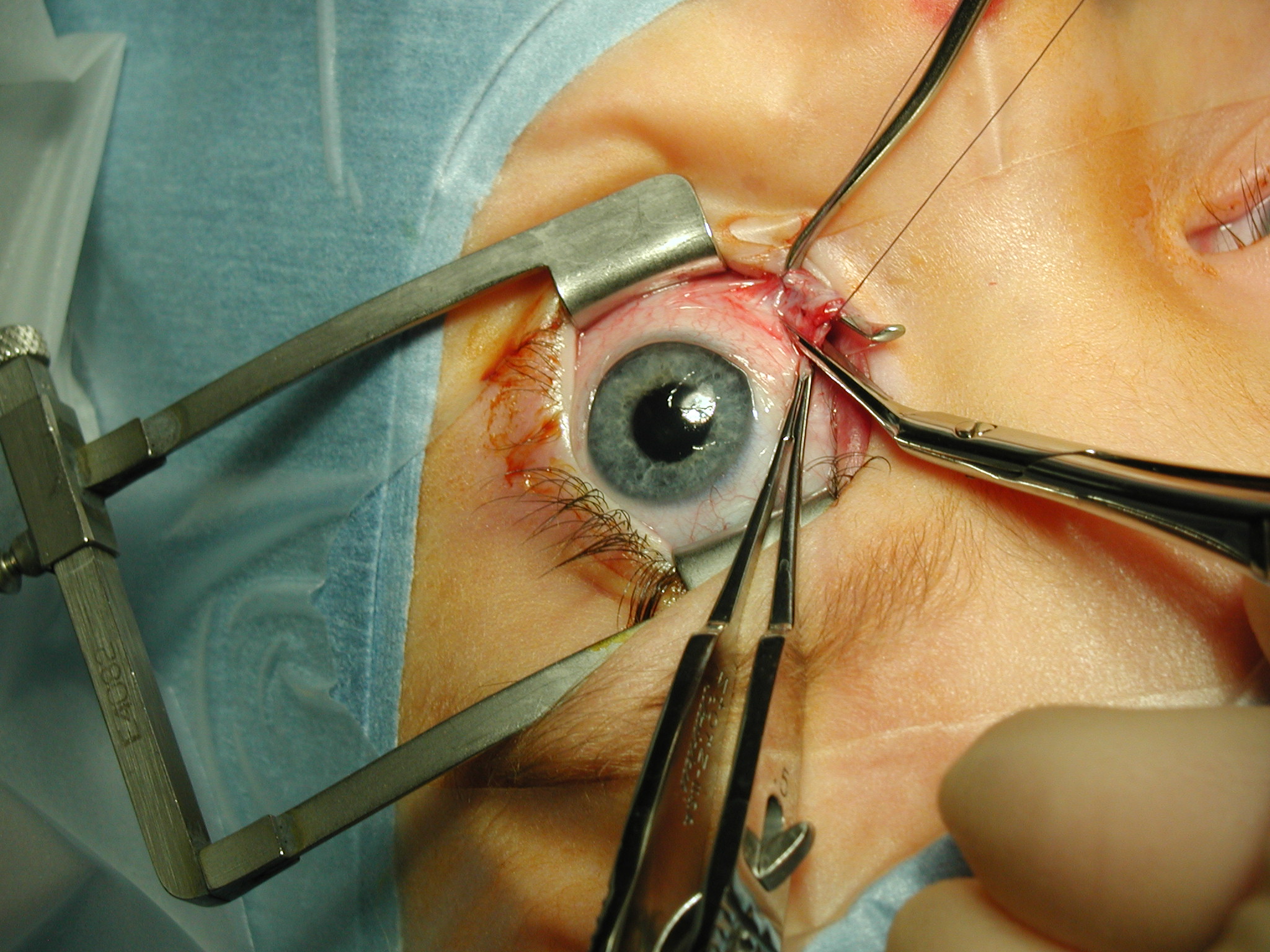 |
|
Bilateral medial rectus recession (BMR) and unilateral recess-resect (R&R) procedures both resulted in good motor and sensory outcomes in adults with comitant non-accommodative. Photo: B. Navez/Wikicommons. Click image to enlarge. |
Recent studies have shown that the incidence of strabismus in adults is on the rise, possibly attributable to factors such as age-related anatomical changes, increased use of digital devices, certain neurologic conditions or systemic diseases and improved diagnostic techniques and awareness among healthcare professionals. The estimated lifetime risk of developing adult-onset strabismus currently hovers around 4%, with esotropia accounting for about a quarter of these cases.
Most previous studies on esotropia grouped all adults together, which complicates surgical outcome analysis considering the pathophysiology of esotropia may differ in younger and older individuals. One type of esotropia occurring almost exclusively in younger adults is acute acquired comitant esotropia, associated with a moderate to large angle, diplopia, full ocular motility and lack of neurologic or anatomic etiology. In a new study, researchers attempted to analyze how certain characteristics, such as age, affect surgical outcomes in this patient population.
The retrospective case series analyzed medical records of adults aged 18 to 60 who underwent strabismus surgery at a tertiary care hospital for comitant non-accommodative esotropia. The majority of patients were female (64%) and the mean age was 36.7 years. Nearly three-quarters (72%) of the cohort were myopic and 80.3% had diplopia. To distinguish between etiologies, patients were classified into three groups based on the disparity between near-distance angles of deviation: basic esotropia (ETBA), esotropia divergence insufficiency pattern (ETDI) and esotropia convergence excess pattern (ETCE).
The study found that the ETCE group had the largest mean deviations at both distance and near, while the ETBA group had the largest ranges at both distances. The two most popular surgical procedures, performed at equal frequency (both 48% of the cohort), were bilateral medial rectus recession (BMR) and unilateral recess-resect (R&R). The surgical outcome analysis showed that the latter procedure had higher motor and sensory success rates than BMR. However, all groups achieved excellent surgical success, regardless of surgical approach or esotropia pattern.
Though the pathophysiology of different patterns of esotropia remains largely unclear, one unique finding the researchers highlighted in their paper, published in American Journal of Ophthalmology, “was the presence of anisometropia in approximately 13% of the cases. It is possible the disparate accommodative effort may be an unrecognized or underrecognized contributor to the development of esotropia.”
By analyzing demographic and clinical information from patients’ medical records, the researchers were able to characterize the typical patient with acute comitant esotropia undergoing surgery. “These patients tend to be younger adults, female and have moderate myopia,” as well as present with moderate angle basic type esodeviations, the researchers summarized in their paper. They added, “Surgical success in this group of patients is high regarding both motor and sensory outcomes,” which agrees with prior literature.
Cavuoto KM, Tibi C, Rosa PR, Capo H. Characteristics and surgical outcomes of comitant esotropia in an adult population between 18 and 60 years old. Am J Ophthalmol. 2024. [Epub ahead of print]. |


